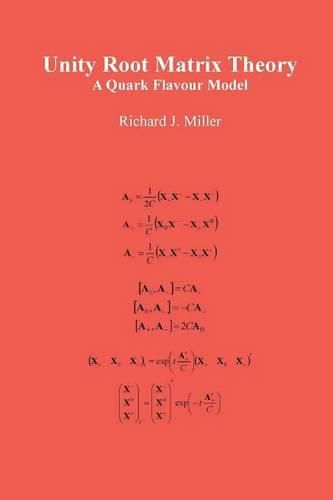Readings Newsletter
Become a Readings Member to make your shopping experience even easier.
Sign in or sign up for free!
You’re not far away from qualifying for FREE standard shipping within Australia
You’ve qualified for FREE standard shipping within Australia
The cart is loading…






This title is printed to order. This book may have been self-published. If so, we cannot guarantee the quality of the content. In the main most books will have gone through the editing process however some may not. We therefore suggest that you be aware of this before ordering this book. If in doubt check either the author or publisher’s details as we are unable to accept any returns unless they are faulty. Please contact us if you have any questions.
This book presents an integer-based representation of the quark flavour model using the mathematics of Unity Root Matrix Theory (URMT). As per a conventional quark representation, the quarks are given by eigenvectors to matrix operators, with commutation relations amongst these operators being those of the symmetry groups SU(2), for an up and down quark isospin representation, and SU(3), for an additional strange quark. The URMT method of lifting then extends this to a full, six-quark model, SU(6).
Unlike conventional physical theory, the work originates in the world of number theory and Diophantine equations, and is based upon the invariance of an eigenvector equation to parametric variation in the unity root matrix - its elements are unity (or primitive) roots. The quark eigenvectors are Pythagorean or hyperbolic in nature, and parametrically evolve in both the time and frequency domain, whilst keeping all their inner product relations invariant, i.e. the model possesses unitary properties equivalent to the special unitary groups SU(2) to SU(6).
Following previous publications on recasting physics in the world of number-theory, URMT has shown, once again, that the physical world may well be reducible to a simpler scheme that dances to the tune of the integers.
$9.00 standard shipping within Australia
FREE standard shipping within Australia for orders over $100.00
Express & International shipping calculated at checkout
This title is printed to order. This book may have been self-published. If so, we cannot guarantee the quality of the content. In the main most books will have gone through the editing process however some may not. We therefore suggest that you be aware of this before ordering this book. If in doubt check either the author or publisher’s details as we are unable to accept any returns unless they are faulty. Please contact us if you have any questions.
This book presents an integer-based representation of the quark flavour model using the mathematics of Unity Root Matrix Theory (URMT). As per a conventional quark representation, the quarks are given by eigenvectors to matrix operators, with commutation relations amongst these operators being those of the symmetry groups SU(2), for an up and down quark isospin representation, and SU(3), for an additional strange quark. The URMT method of lifting then extends this to a full, six-quark model, SU(6).
Unlike conventional physical theory, the work originates in the world of number theory and Diophantine equations, and is based upon the invariance of an eigenvector equation to parametric variation in the unity root matrix - its elements are unity (or primitive) roots. The quark eigenvectors are Pythagorean or hyperbolic in nature, and parametrically evolve in both the time and frequency domain, whilst keeping all their inner product relations invariant, i.e. the model possesses unitary properties equivalent to the special unitary groups SU(2) to SU(6).
Following previous publications on recasting physics in the world of number-theory, URMT has shown, once again, that the physical world may well be reducible to a simpler scheme that dances to the tune of the integers.